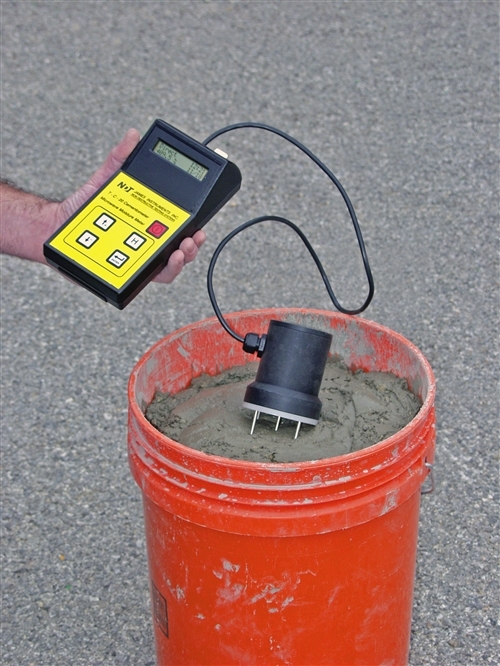The Ultimate Overview to Moisture Meters: A Comprehensive Overview and Just How They Can Conserve You Cash
In the world of building maintenance, building and construction, and numerous markets, the relevance of properly measuring dampness levels can not be overstated. Wetness meters work as essential devices in spotting and keeping an eye on moisture content in products, helping in protecting against costly damages and making sure the quality of items. Understanding the nuances of various types of wetness meters, their applications, and the prospective cost-saving advantages they offer can be a game-changer for organizations and specialists alike. Uncovering just how these devices can not only simplify procedures yet also add to monetary savings is a journey worth starting.
Sorts Of Moisture Meters
Numerous kinds of wetness meters are readily available for various applications in different industries. One typical type is the pin-type moisture meter, which measures the electric resistance between 2 pins placed right into a material. This kind appropriates for timber, drywall, and various other building products. Pinless dampness meters, on the various other hand, usage electro-magnetic sensor plates to scan a larger location without creating damages to the material's surface. These meters are excellent for swiftly examining wetness degrees in huge areas such as floorings and wall surfaces.
Infrared dampness meters determine the thermal homes of a product to establish its wetness material non-invasively, making them helpful for applications where pin or pinless meters might not be suitable. Comprehending the different kinds of wetness meters available can help markets choose the most suitable tool for their certain moisture dimension demands.

Advantages of Making Use Of Moisture Meters

Additionally, making use of moisture meters can lead to boosted power effectiveness. In farming setups, dampness meters play a vital duty in enhancing plant returns by allowing farmers to keep an eye on dirt dampness degrees and make notified irrigation decisions.
Just How to Select the Right Moisture Meter
Picking the proper wetness meter involves taking into consideration key elements such as product compatibility, measurement variety, and calibration accuracy. When selecting a moisture meter, it's essential to guarantee that the meter appropriates for the certain material you will be testing. Different materials have varying electric residential or commercial properties that can impact wetness readings, so picking a meter developed for your material is critical for precise results. In addition, take into consideration the measurement series of the dampness meter. Make sure that the meter can identify moisture degrees within the variety required for your applications. Calibration precision is another essential aspect to remember (Moisture Meter). Go with a dampness meter with trustworthy calibration to make certain consistent and accurate readings. Some meters might call for routine calibration changes, so recognizing the calibration procedure is very important. By thoroughly examining these variables, you can pick a moisture meter that meets your demands and supplies precise wetness dimensions for your tasks.
Correct Techniques for Moisture Meter Use
To my review here make sure accurate dampness readings and make best use of the performance of a wetness meter, using proper techniques is essential. When using a pin-type moisture meter, insert the pins or probes right into the material being examined up until they make full call. By adhering to these proper techniques, customers can depend on their dampness meter to give trustworthy wetness levels, aiding in preventing pricey damage or making certain top quality in different applications.

Cost Savings With Moisture Meter Applications
How can the tactical use of moisture meters lead to significant price savings across different sectors? Dampness meters play a critical role in price savings by preventing prospective damage and ensuring quality assurance in various markets. In the farming market, have a peek at this site dampness meters aid in determining the ideal time for harvesting plants, stopping excess or over-drying moisture that can impact the final item's high quality. This accurate tracking assists farmers prevent unnecessary losses and optimize their return.

Additionally, in the food processing sector, wetness meters are important for keeping an eye on item quality and guaranteeing conformity with security guidelines. By properly determining dampness additional reading web content in food, suppliers can protect against putridity, maintain quality, and reduce waste, leading to considerable cost financial savings. In general, the strategic application of wetness meters is a beneficial financial investment that can cause significant expense decreases and enhanced efficiency throughout numerous sectors.
Final Thought
Finally, moisture meters are valuable tools for measuring and detecting dampness degrees in various materials. By utilizing the right moisture meter and complying with correct strategies, users can effectively protect against costly damages created by excess wetness. Investing in a quality dampness meter can lead to substantial cost savings over time by determining potential problems at an early stage and allowing prompt removal. Inevitably, dampness meters are important instruments for preserving the integrity and durability of materials and frameworks.
Dampness meters offer as vital devices in discovering and keeping track of moisture material in products, assisting in protecting against costly problems and making certain the high quality of products. Infrared moisture meters measure the thermal residential or commercial properties of a material to establish its moisture content non-invasively, making them useful for applications where pin or pinless meters might not be appropriate.Dampness meters use indispensable benefits in accurately analyzing and keeping track of wetness degrees in varied materials and atmospheres. In farming settings, moisture meters play a crucial duty in enhancing plant returns by enabling farmers to check dirt wetness levels and make informed watering decisions.In conclusion, dampness meters are beneficial tools for detecting and gauging dampness levels in various materials.